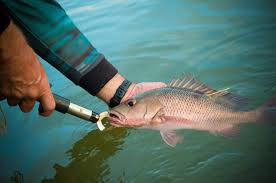Introduction
Fish tagging systems have long been a cornerstone of marine biology, fisheries management, and conservation efforts. By tracking fish movements, growth rates, and survival, researchers gain invaluable insights into aquatic ecosystems. However, traditional data analysis methods often struggle with the sheer volume and complexity of tagging data.
Enter Artificial Intelligence (AI) and Machine Learning (ML)—technologies that are transforming how we process, analyze, and interpret fish tagging data. From improving tracking accuracy to predicting migration patterns, AI-powered fish tagging systems are setting new standards in marine research.
In this article, we’ll explore:
- How AI and ML enhance fish tagging data analysis
- Real-world applications and case studies
- The future of AI in fisheries management
The Challenges of Traditional Fish Tagging Data Analysis
Before diving into AI’s role, it’s essential to understand the limitations of conventional tagging systems:
- Data Overload – Modern acoustic and satellite tags generate massive datasets, making manual analysis time-consuming.
- Human Error – Manual data entry and interpretation can lead to inaccuracies.
- Limited Predictive Power – Traditional statistical models may miss complex behavioral patterns.
- Real-Time Processing Gaps – Many systems lack the ability to analyze data in real time.
AI and machine learning address these challenges by automating data processing, improving accuracy, and uncovering hidden trends.
How AI and Machine Learning Improve Fish Tagging Systems
1. Automated Data Processing & Pattern Recognition
AI algorithms can process vast amounts of tagging data far faster than humans. Machine learning models, particularly deep learning neural networks, excel at recognizing patterns in:
- Migration routes – Identifying seasonal movements of species like salmon or tuna.
- Behavioral anomalies – Detecting unusual activity that may indicate stress or predation.
- Environmental correlations – Linking fish movements to water temperature, salinity, or oxygen levels.
Case Study: Researchers at the Pacific Northwest National Laboratory (PNNL) used AI to analyze acoustic tagging data from Columbia River salmon. The system identified migration bottlenecks caused by dams, helping optimize fish passage solutions.
2. Enhanced Tracking Accuracy with AI-Powered Sensors
Modern fish tagging systems now incorporate AI-enhanced sensors that:
- Filter noise – Distinguish between actual fish movements and environmental interference.
- Predict tag detachment – Machine learning models can estimate when a tag might fall off, improving data reliability.
- Adaptive sampling – AI adjusts tag transmission frequency based on movement patterns, conserving battery life.
3. Predictive Analytics for Fisheries Management
AI doesn’t just analyze past data—it predicts future trends. Fisheries managers use ML models to forecast:
- Population dynamics – Estimating stock levels to prevent overfishing.
- Climate change impacts – Predicting how warming oceans affect fish distribution.
- Optimal fishing seasons – Recommending sustainable harvest periods.
Example: The Food and Agriculture Organization (FAO) employs AI-driven models to assess global fish stocks, ensuring compliance with sustainable fishing practices.
4. Real-Time Monitoring & Alert Systems
AI-powered fish tagging systems enable real-time tracking, crucial for:
- Illegal fishing detection – Unusual movement patterns can signal poaching.
- Disaster response – Tracking fish displacement after oil spills or hurricanes.
- Aquaculture optimization – Monitoring farmed fish health and growth.
Commercial Application: Companies like Thelma Biotel integrate AI with fish tags to provide instant alerts to fisheries, improving operational efficiency.
Key AI Technologies Used in Fish Tagging Systems
| Technology | Application in Fish Tagging |
| Computer Vision | Analyzing underwater camera footage to identify tagged fish. |
| Neural Networks | Detecting complex movement patterns from acoustic tags. |
| Natural Language Processing (NLP) | Extracting insights from research papers to improve tagging strategies. |
| Reinforcement Learning | Optimizing tag deployment strategies based on past data. |
The Future of AI in Fish Tagging Systems
The integration of AI and fish tagging is still evolving. Future advancements may include:
- Autonomous underwater drones with AI-powered tagging and tracking.
- Blockchain for data transparency – Ensuring tamper-proof tagging records.
- Global fish migration maps – AI synthesizing data from thousands of tags worldwide.
Conclusion
AI and machine learning are revolutionizing tagging systems, making data analysis faster, more accurate, and actionable. From improving conservation efforts to optimizing commercial fisheries, these technologies are unlocking new possibilities in marine science.
As AI continues to advance, we can expect even smarter tagging systems that provide deeper insights into aquatic ecosystems—ensuring sustainable fisheries for future generations.
Also know Understanding Breast Cancer: A Simple Guide to a Complex Disease for Health














